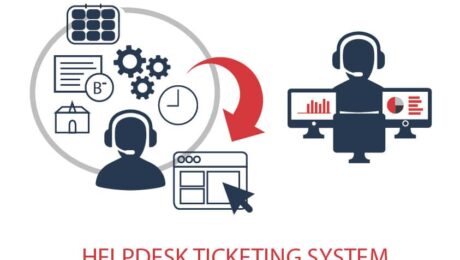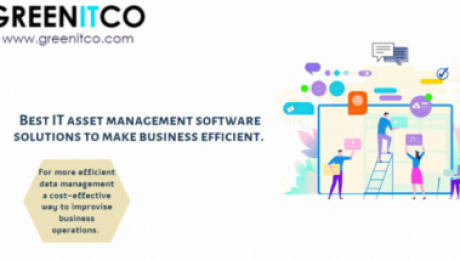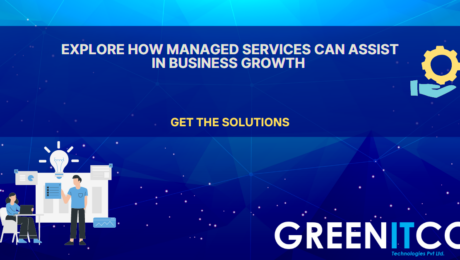Why Choose GreenITCo for Your IT Asset Management Needs?
In today’s fast-paced digital landscape, effective IT Asset Management (ITAM) is more than just an operational requirement; it’s a strategic necessity. Whether you’re a small business or a large enterprise, efficiently managing your IT assets can significantly impact productivity, profitability, and compliance. GreenITCo Technologies Pvt Ltd stands out as an innovative ITAM solution provider, offering comprehensive and tailored services designed to streamline asset management, increase efficiency, and optimize asset utilization.
Why IT Asset Management Matters
IT Asset Management is the systematic process of managing, deploying, operating, maintaining, and disposing of IT assets. Effective ITAM brings several advantages to businesses, including:
- Cost Control: Reduces unnecessary expenditures and extends asset lifecycle.
- Enhanced Compliance: Ensures adherence to regulatory standards.
- Efficient Utilization: Maximizes asset use, minimizing downtime and enhancing productivity.
- Security and Risk Management: Provides insights into asset vulnerabilities and protects against unauthorized access.
Why Choose GreenITCo for IT Asset Management?
When choosing a partner for IT Asset Management, expertise, customization, and commitment to innovation are key. Here’s how GreenITCo sets itself apart in the ITAM industry.
Comprehensive Asset Management Solution
GreenITCo offers an all-encompassing IT Asset Management platform with features such as Enterprise Asset Management (EAM), which includes advanced functionalities to manage and monitor assets throughout their lifecycle. With real-time asset visibility and control, GreenITCo’s ITM platform provides a centralized overview of all assets, enabling businesses to stay updated on asset status, location, and utilization, leading to better decision-making.
Integrated Ticketing System for Streamlined Operations
Effective ITAM requires prompt issue resolution, and GreenITCo’s integrated ticketing tool is designed specifically to enhance the speed and efficiency of handling asset-related issues. With a user-friendly interface and robust ticketing capabilities, this tool ensures timely support and facilitates efficient problem resolution, keeping your operations running smoothly and reducing downtime.
Efficient Asset Tracking with Barcode Technology
GreenITCo leverages standardized barcoding technology to make asset tracking simpler and more accurate. This feature allows businesses to capture data effortlessly, eliminating the potential for human error while providing a quick way to check asset details. With barcoding, businesses can automate much of the asset tracking process, saving time and reducing costly errors.
Network Inventory Management for Optimal Network Performance
For organizations heavily reliant on IT networks, GreenITCo’s Network Inventory Management solution ensures seamless operation by maintaining a comprehensive and up-to-date inventory of network components. This tool not only helps in identifying potential network issues but also offers real-time insights into network infrastructure, helping organizations make informed decisions and maintain peak network performance.
Streamlined Procurement Management
Procurement plays a crucial role in asset management, and GreenITCo offers a Procurement Management module to simplify the asset acquisition process. The tool allows businesses to track purchase orders, monitor vendor performance, and optimize procurement processes, ensuring cost-effective and timely acquisition of assets.
Mobile-Friendly Solutions for On-the-Go Access
GreenITCo understands the importance of flexibility, and its ITAM platform includes mobile-friendly solutions that give users access to asset information on the go. Whether it’s checking asset status, updating asset data, or handling support tickets, the mobile app makes ITAM accessible and convenient, helping teams remain productive regardless of location.
For Demo Request Form please visit IT Asset Management Software

Key Benefits of GreenITCo’s IT Asset Management Software
By implementing GreenITCo’s ITAM software, businesses gain access to a wide range of benefits designed to enhance productivity and profitability:
- Increased Efficiency: With automation in tracking, ticketing, and reporting, businesses experience significant time and cost savings.
- Improved Compliance: GreenITCo’s ITAM platform ensures that organizations remain compliant with industry regulations, minimizing the risk of penalties.
- Enhanced Visibility: Real-time monitoring provides a clear view of asset status, utilization, and lifecycle.
- Reduced Operational Costs: Optimized asset management leads to decreased spending on unnecessary assets and improved asset longevity.
Choosing GreenITCo: A Commitment to Innovation and Support
GreenITCo Technologies Pvt Ltd is dedicated to helping businesses modernize and optimize their IT asset management practices. With a customer-centric approach, GreenITCo offers reliable support, customizable features, and innovative technology tailored to meet the unique needs of each organization.
- Published in Asset Management, helpdesk outsourcing, ITM, Mobile, Technology
What is service desk software?
Service desk software is a centralized platform designed to manage and handle IT service requests, incidents, and problems. It provides users with a single point of contact (SPOC) for reporting issues, submitting requests, and seeking assistance, either for IT-related issues or broader business support services. The software enables IT teams to track, manage, and resolve issues efficiently, enhancing the overall user experience and minimizing downtime.
Core Functions of Service Desk Software
At its core, service desk software offers several critical functions, including:
- Incident Management: Ensures that all issues reported by users are logged, tracked, and resolved quickly. This reduces system downtime and minimizes the impact of technical problems on business operations.
- Request Fulfillment: Manages user requests for new services, software installations, access permissions, and more.
- Problem Management: Identifies and resolves the underlying causes of recurring incidents, preventing future issues from arising.
- Knowledge Management: Provides users with self-service options by maintaining a knowledge base with solutions to common issues.
- Change Management: Helps IT teams manage changes to the IT infrastructure, ensuring smooth implementation and minimizing disruptions.
Key Features of Service Desk Software
1. Ticketing System
At the heart of any service desk software is the ticketing system, which logs and tracks all user requests and issues. This feature ensures that every problem is recorded and managed through to resolution. The ticketing system assigns priority levels to issues, helping IT teams focus on the most critical tasks first.
2. Automated Workflows
Automation is a game-changer in service desk software. With automated workflows, businesses can streamline routine tasks, such as ticket assignments, notifications, and escalations, which reduces the manual workload and improves response times.
3. Self-Service Portal
Many service desk tools provide a self-service portal where users can find answers to their questions without contacting the IT team. This feature typically includes access to a knowledge base, FAQs, and troubleshooting guides, enabling users to resolve common issues independently.
4. Reporting and Analytics
Service desk software offers detailed reporting and analytics features, providing insights into ticket trends, response times, resolution times, and more. These insights help IT teams identify bottlenecks, improve efficiency, and ensure that service level agreements (SLAs) are met.
5. Multi-Channel Support
Modern service desk software supports multi-channel communication, allowing users to submit requests via email, chat, phone, or social media. This ensures flexibility and convenience for both IT teams and end users.

Benefits of Using Service Desk Software
Implementing service desk software offers numerous advantages to businesses, including:
1. Improved Efficiency
By automating routine tasks and centralizing all service requests, service desk software significantly improves the efficiency of IT teams. IT staff can focus on resolving issues rather than manually managing tickets and assigning tasks.
2. Enhanced User Experience
A well-organized service desk improves the user experience by providing timely and effective solutions to problems. Users benefit from faster response times and self-service options, reducing frustration.
3. Better Resource Allocation
Service desk software allows IT teams to prioritize tasks based on urgency, ensuring that critical issues are addressed first. This helps businesses allocate their IT resources more effectively.
4. Proactive Problem Management
With problem management features, service desk software helps businesses identify the root causes of recurring issues and take preventive action, reducing the frequency and severity of future incidents.
5. Ensured Compliance with SLAs
Service desk software tracks all activities related to incident resolution, ensuring that businesses meet their Service Level Agreements (SLAs). This helps maintain accountability and ensures high levels of service quality.
Choosing the Right Service Desk Software
When selecting service desk software for your organization, it’s essential to consider factors such as:
- Scalability: Can the software grow with your business?
- Ease of Use: Is the interface user-friendly for both IT staff and end users?
- Customization: Can you tailor the software to suit your specific workflows and processes?
- Integration Capabilities: Does it integrate with your existing tools, such as CRM, project management, and monitoring systems?
Conclusion
In an era where technology drives business success, service desk software is a vital tool for ensuring that IT teams can deliver exceptional support and keep operations running smoothly. By offering a centralized platform for managing requests, incidents, and changes, service desk software enhances efficiency, improves user satisfaction, and ensures compliance with SLAs. Whether you’re a small business or a large enterprise, investing in the right service desk software can make a significant difference in your IT support strategy.
- Published in Asset Management, helpdesk outsourcing, ITM, Technology
Top Benefits of Implementing Asset Management Software for Businesses
In today’s fast-paced digital landscape, businesses across industries are constantly seeking ways to optimize operations, reduce costs, and enhance productivity. One crucial element that plays a significant role in achieving these objectives is asset management. Managing assets effectively ensures the seamless functioning of business operations, but manual processes can lead to inefficiencies, errors, and increased costs. This is where asset management software becomes essential.
Implementing a robust asset management system can transform how organizations handle their physical and digital assets—from improving visibility and control to ensuring compliance and boosting profitability. This article explores the top benefits of adopting asset management software for businesses.
1. Enhanced Asset Tracking and Visibility
One of the primary benefits of asset management software is the ability to track and monitor assets in real-time. Businesses often manage a wide range of assets, from IT equipment and machinery to vehicles and digital resources. Asset management software provides a centralized platform that offers complete visibility into the location, status, and condition of each asset.
This real-time visibility reduces the risk of asset misplacement or theft and helps businesses make informed decisions about asset allocation, utilization, and maintenance. Features like barcoding, RFID, and GPS tracking allow businesses to locate assets instantly, minimizing downtime and improving operational efficiency.
2. Improved Asset Lifecycle Management
Every asset goes through a lifecycle—from procurement to deployment, maintenance, and disposal. Efficient lifecycle management is crucial for reducing costs and ensuring maximum asset value. Asset management software automates the asset lifecycle, ensuring each phase is properly tracked and managed.
With automated reminders for scheduled maintenance, businesses can prevent equipment breakdowns and avoid costly repairs or replacements. Additionally, the software ensures that disposal processes follow legal and environmental protocols, mitigating compliance risks.
3. Cost Savings and Budget Optimization
One of the most significant advantages of asset management software is cost reduction. By providing accurate, real-time data on asset usage, condition, and availability, businesses can avoid over-purchasing or under-utilizing resources. This enables better budget allocation and minimizes unnecessary spending.
The software also helps businesses track asset depreciation, providing insights into when replacements are needed. This data supports strategic capital investments and helps avoid unexpected expenses. Furthermore, automating asset-related processes reduces labor costs, freeing employees to focus on high-priority tasks.
4. Streamlined Compliance and Risk Management
For many industries, regulatory compliance is essential. Failure to comply with industry standards can result in hefty fines, legal actions, and reputational damage. Asset management software helps businesses meet regulatory requirements by ensuring that all assets are properly documented and tracked.
The software can store compliance certificates, warranties, and audit trails, making it easy to demonstrate compliance during inspections. Automated alerts for asset inspections, license renewals, and compliance-related tasks ensure that deadlines are never missed, reducing the risk of penalties.
5. Increased Productivity and Efficiency
Manual asset management processes are time-consuming and prone to errors. Asset management software automates time-intensive tasks such as inventory audits, procurement, and maintenance scheduling, reducing human error and saving valuable time.
This automation allows businesses to focus on strategic activities that drive growth and innovation. Additionally, the software integrates with other business systems, such as enterprise resource planning (ERP) and customer relationship management (CRM) platforms, creating a more interconnected and efficient workflow.
6. Preventive Maintenance and Downtime Reduction
Regular maintenance is essential to ensure that assets operate efficiently and avoid unexpected failures. Asset management software enables businesses to schedule routine inspections, servicing, and repairs based on asset usage and condition.
With preventive maintenance, businesses can prevent costly equipment failures and minimize downtime, directly enhancing productivity and profitability. Some systems also offer predictive maintenance tools that analyse data from IoT sensors to identify potential issues, allowing businesses to proactively address problems before they escalate.
7. Data-Driven Decision Making
The insights provided by asset management software are invaluable for decision-making. By analysing data on asset performance, utilization rates, maintenance history, and costs, businesses can make more informed decisions about asset acquisition, replacement, and optimization.
Data-driven insights also help identify trends and opportunities for process improvements and cost savings. For example, businesses can evaluate which models or vendors offer the best value and reliability, guiding future purchasing decisions.

8. Scalability and Flexibility
As businesses grow and evolve, their asset management needs change. A key benefit of asset management software is its scalability and flexibility. Whether managing a small set of assets or a large fleet across multiple locations, the software can scale to meet changing demands.
Many asset management solutions also offer customizable features, allowing businesses to tailor the software to their unique needs. This flexibility ensures that organizations can continue to optimize asset management processes as they expand and adapt to new challenges.
9. Improved Accountability and Collaboration
A centralized asset management platform enhances accountability by assigning assets to specific employees or departments, ensuring that each asset is used appropriately and well-maintained.
The software also promotes collaboration by providing a shared view of asset data across teams and departments. This transparency improves communication and ensures that all stakeholders have access to accurate, up-to-date information.
10. Sustainability and Environmental Impact
Sustainability is increasingly important for businesses, and asset management software can help reduce environmental impact. By optimizing asset utilization and extending asset lifecycles through preventive maintenance, businesses can minimize waste and lower their carbon footprint.
Additionally, the software tracks energy consumption and environmental metrics, helping businesses identify opportunities to reduce energy usage and support corporate social responsibility (CSR) goals.
Conclusion
In today’s competitive business environment, optimizing asset management processes is essential for improving efficiency, reducing costs, and staying ahead of the curve. Implementing asset management software provides businesses with tools to gain visibility, streamline processes, and make data-driven decisions that enhance profitability and growth.
From improving asset tracking to enabling compliance and sustainability, the benefits of asset management software are clear. By leveraging technology, businesses can transform asset management practices, achieving long-term success and operational excellence.
Whether you’re a small business or a large enterprise, adopting an asset management solution is a strategic move that will deliver significant returns through increased productivity, cost savings, and improved operational efficiency.
- Published in Asset audit, Asset Management, helpdesk outsourcing, ITM, Mobile, Technology
What is an IT Ticketing System?
In today’s fast-paced digital environment, businesses must stay on top of IT issues to maintain smooth operations. An IT ticketing system is a vital tool for managing, tracking, and resolving technical problems. Whether it’s addressing a software glitch, hardware malfunction, or network outage, an IT ticketing system ensures these problems are efficiently handled. This article delves into what an IT ticketing system is, how it works, and why it’s essential for organizations of all sizes.
Understanding IT Ticketing Systems
An IT ticketing system, also known as a helpdesk or service desk system, is a software platform designed to manage and streamline IT support tasks. When users or employees encounter technical issues, they submit a “ticket” through the system, which contains details of the issue. The IT team then tracks the ticket from its initial submission to resolution.
The primary purpose of an IT ticketing system is to ensure that no issue goes unresolved and that the IT department can prioritize, assign, and monitor tasks effectively. By automating workflows and providing a structured approach to problem resolution, these systems save businesses both time and money.
Key Features of an IT Ticketing System
To better understand the value of an IT ticketing system, let’s explore some of its key features:
Ticket Management
The core functionality of an IT ticketing system is managing tickets. Tickets serve as digital records for tracking issues, requests, and incidents. Each ticket typically includes:
- Issue description
- Priority level (low, medium, high)
- Status (open, in progress, resolved, closed)
- Assigned IT technician
- Progress notes and solutions
Effective ticket management ensures support teams can track issues in real-time, reducing delays and miscommunication.
Automated Workflows
Automation is a game-changer in IT ticketing systems. Workflow automation eliminates the need for manual task assignments by routing tickets to the appropriate technician based on predefined rules. For example, an issue categorized as a “network outage” can automatically be assigned to a network specialist. This saves time and ensures tickets are handled by the most qualified personnel.
Prioritization and SLAs
Prioritization features allow IT teams to address critical issues first. Many ticketing systems offer Service Level Agreement (SLA) management tools, ensuring support teams meet response and resolution deadlines. High-priority tickets can trigger alerts or escalations if they are not addressed within a set timeframe, ensuring compliance with policies or client agreements.
Knowledge Base Integration
A knowledge base is a repository of helpful articles, FAQs, and troubleshooting guides. IT ticketing systems often integrate with a knowledge base, allowing users to resolve common issues independently, without creating a ticket. This reduces the workload on IT teams and empowers users to find solutions on their own.
Reporting and Analytics
IT ticketing systems provide reporting and analytics tools to help managers monitor performance, identify recurring issues, and analyse technician workloads. Reports on ticket resolution times, user satisfaction, and incident types help organizations make data-driven improvements to their support processes.
Multi-Channel Support
Advanced IT ticketing systems offer multiple communication channels—such as email, phone, chat, and web portals—allowing users to report issues in their preferred way. This feature ensures that tickets are captured regardless of the submission method.
Mobile Access
With remote work becoming more common, IT teams need access to the ticketing system from anywhere. Mobile apps or responsive web interfaces allow technicians to track and resolve issues on the go, enhancing flexibility and ensuring faster resolution, especially for time-sensitive problems.

Benefits of Using an IT Ticketing System
Implementing an IT ticketing system offers several advantages:
- Improved Efficiency
By centralizing all IT requests and issues, the ticketing system simplifies workflows for the IT team. Tickets are easy to track, assign, and prioritize, resulting in faster resolution times. Automation further enhances efficiency by reducing manual tasks. - Enhanced Collaboration
An IT ticketing system fosters collaboration among IT staff by enabling multiple technicians to contribute to a single ticket. This is particularly useful for complex issues that require input from specialists in different areas. It also improves communication between the IT team and users by providing real-time updates through the ticket. - Better Organization and Documentation
Each ticket serves as documentation of an issue, providing a detailed record that can be referenced in the future. This helps technicians resolve recurring problems more efficiently and maintains a history of incidents and solutions, which can be valuable for audits and compliance. - Increased Accountability
With tickets assigned to specific individuals and tracked throughout their lifecycle, IT teams maintain better accountability. Managers can easily see who is responsible for each task, ensuring no ticket slips through the cracks. - Scalability
IT ticketing systems are scalable, accommodating the needs of both small businesses and large enterprises. As an organization grows, the system can handle an increasing number of requests without overburdening the IT team.
Why Your Business Needs an IT Ticketing System
Regardless of the size of your organization, an IT ticketing system offers measurable advantages:
- Faster Response Times
With a ticketing system, issues are logged immediately and routed to the appropriate team members. Automation ensures high-priority tickets receive prompt attention, minimizing downtime and disruptions. - Reduced IT Costs
By streamlining processes and reducing inefficiencies, an IT ticketing system helps save money. It minimizes the time technicians spend on each issue and allows users to resolve common problems through self-service, optimizing resource allocation. - Improved User Experience
Fast and reliable IT support translates into a better user experience for both employees and customers. When issues are resolved promptly, users remain productive and satisfied. A well-implemented ticketing system also provides transparency by keeping users informed about the status of their requests, reducing frustration.
Conclusion
An IT ticketing system is essential for modern IT support, offering an efficient way to manage and resolve technical issues. From ticket tracking and automation to reporting and SLA management, these systems empower IT teams to provide high-quality support while minimizing costs and improving response times. Whether you’re a small startup or a large enterprise, adopting an IT ticketing system is a smart investment that will streamline operations and enhance user satisfaction.
For businesses seeking comprehensive IT ticketing tools, GreenITCo offers innovative solutions tailored to meet organizational needs. Their robust software, which includes integrated ticketing and asset management features, ensures no issue goes unresolved while maintaining optimal productivity across teams.
- Published in Asset audit, Asset Management, helpdesk outsourcing, ITM, Mobile, Technology, technology support
How to Choose the Best Helpdesk Ticketing System for Effective IT Support
Introduction
In today’s fast-paced digital world, efficient IT support is essential to maintaining seamless operations across businesses of all sizes. Whether it’s troubleshooting network issues, resolving software glitches, or managing hardware failures, having a well-structured IT ticketing system is crucial. A helpdesk ticketing system serves as the backbone of IT support by streamlining communication between users and IT teams, ensuring prompt issue resolution, and optimizing workflow management.
This article will guide you through everything you need to know about helpdesk ticketing systems and how to choose the best one for your business. We’ll cover key features, benefits, and best practices to help you make the most of your IT ticketing system. Let’s get started!
What is a Helpdesk Ticketing System?
A helpdesk ticketing system is a tool that IT teams use to manage and resolve user issues. It acts as a centralized platform where support tickets—requests or reports of issues—are created, assigned, and tracked through to resolution. These systems enable IT departments to handle user requests efficiently and maintain a detailed record of support-related activities.
The primary goal of a helpdesk ticketing system is to ensure that IT support teams can systematically prioritize and manage issues, resulting in faster resolution times and improved user satisfaction.
Why Do You Need a Helpdesk Ticketing System?
Managing IT support requests without a structured system can be overwhelming. Issues may go unnoticed, causing delays, downtime, and dissatisfied users. Implementing a robust ticketing system offers several key benefits:
- Centralized Communication: All user requests and issues are documented in one place, giving IT teams a clear overview of all tasks in progress.
- Increased Efficiency: Automated workflows and ticket assignments reduce manual effort and speed up problem resolution.
- Better Accountability: Support tickets are assigned to specific team members, making it easy to track progress and ensure acc ountability.
- Improved Customer Satisfaction: Faster, more efficient resolutions lead to happier users and increased productivity.
- Comprehensive Reporting: IT teams can generate reports on resolution times, problem trends, and performance metrics to support continuous improvement.
Key Features of an IT Ticketing System
When selecting the right ticketing system for your organization, look for specific features to ensure the platform meets your needs:
1. Automated Ticketing
Automation is a critical feature in modern helpdesk systems. Automated ticket assignment ensures that requests are routed to the right personnel or department based on predefined criteria, minimizing delays and ensuring that high-priority issues receive immediate attention.
2. Multi-Channel Support
Users may submit IT support requests through various channels, such as email, phone, chat, or social media. A reliable ticketing system integrates these channels into a single platform, ensuring no request goes unnoticed.
3. Ticket Prioritization and Categorization
Effective ticketing systems allow for the categorization and prioritization of issues. For instance, a minor software update can be marked as low priority, while a network outage would be labelled as high priority. This ensures that critical issues are addressed first.
4. Self-Service Options
Many advanced ticketing systems include self-service features, such as a knowledge base or FAQs. These resources empower users to resolve common problems independently, reducing the number of tickets IT teams need to manage.
5. Mobile Access
In today’s mobile-driven world, IT support teams need the ability to manage tickets on the go. A mobile-friendly platform ensures that tickets can be tracked, updated, and resolved from anywhere, improving response times and productivity.
6. Reporting and Analytics
Comprehensive reporting tools are a must-have feature in any IT ticketing system. IT managers need access to detailed analytics to understand performance trends, track key performance indicators (KPIs), and identify areas for improvement. Insights from data such as ticket volume, response times, and resolution rates can help IT teams optimize their support processes.

How to Choose the Right IT Ticketing System
Selecting the best ticketing system requires a thorough understanding of your organization’s needs. Here are key factors to consider:
1. Scalability
Choose a system that can grow with your organization. Ensure it can handle an increasing number of users, tickets, and requests as your business expands.
2. Ease of Use
A user-friendly interface is essential for both end-users and IT staff. Complicated tools can cause delays, frustration, and a steeper learning curve.
3. Integration Capabilities
Look for a system that integrates seamlessly with other tools, such as asset management systems, customer relationship management (CRM) platforms, or monitoring software, to enhance workflow and data sharing.
4. Customization
Since every organization has unique needs, choose a helpdesk ticketing system that allows customization. The ability to create custom workflows, ticket categories, and reports ensures the platform aligns with your processes.
5. Cost
Consider both the initial cost and ongoing maintenance fees. While free or low-cost solutions might be attractive, they may lack essential features. Aim for a system that offers a good balance between features and affordability.
Best Practices for Using an IT Ticketing System
Once you’ve selected the right ticketing system software, following best practices will help you get the most out of it:
- Train Your Team: Ensure IT staff are trained to use the system effectively. Regular refresher courses can help them stay updated on new features and workflows.
- Monitor KPIs: Track performance metrics like response times, resolution rates, and user satisfaction to identify areas for improvement.
- Encourage User Feedback: Gathering feedback from users helps identify pain points and provides insights for refining processes.
- Update the Knowledge Base Regularly: Keep self-service resources up to date to minimize incoming tickets and empower users to resolve issues independently.
Conclusion
An efficient helpdesk ticketing system is the cornerstone of any successful IT support strategy. By selecting the right system, your organization can streamline support processes, reduce response times, and enhance user satisfaction. When evaluating ticketing software, prioritize features such as automation, multi-channel support, and reporting tools to ensure your IT team can effectively manage tickets.
Choosing the best ticketing system is an investment that will pay off through improved efficiency, accountability, and productivity in the long run.
- Published in Asset audit, Asset Management, helpdesk outsourcing, ITM, Mobile, Technology, technology support
The Role of Enterprise Asset Management, ITAM, and ITSM in Digital Transformation
In today’s digital era, organizations face the dual challenge of managing an ever-growing inventory of assets while ensuring optimal service delivery. Implementing effective strategies around Enterprise Asset Management (EAM), IT Asset Management (ITAM), and IT Service Management (ITSM) can significantly enhance operational efficiency and drive business success. This article delves into the intricacies of these concepts, their interrelations, and their importance in modern business environments.
What is Enterprise Asset Management (EAM)?
Enterprise Asset Management (EAM) refers to the comprehensive process of managing an organization’s physical assets throughout their life cycle—from acquisition and operation to maintenance and disposal. The goal of EAM is to maximize the value and efficiency of these assets while minimizing associated costs and risks.
Key Features of EAM
- Life cycle Management: EAM tracks assets from acquisition to decommissioning, providing a holistic view to identify maintenance needs and optimize asset utilization.
- Predictive Maintenance: Leveraging data analytics, EAM systems can predict when assets will require maintenance, reducing downtime and enhancing productivity.
- Regulatory Compliance: EAM helps organizations adhere to regulatory standards and industry best practices, ensuring assets are managed in compliance with legal and safety requirements.
- Integration with Other Systems: EAM integrates with enterprise systems like Enterprise Resource Planning (ERP) and ITAM, promoting better data flow and informed decision-making.
What is IT Asset Management (ITAM)?
IT Asset Management (ITAM) is a subset of asset management focused specifically on IT assets such as hardware, software, and related resources. ITAM ensures the life cycle management of these assets to promote efficient utilization while maintaining compliance with regulations and licensing agreements.
Importance of ITAM
- Cost Efficiency: ITAM tracks IT spending, identifies underutilized assets, and eliminates unnecessary expenditures.
- License Management: A strong ITAM strategy ensures compliance with software licensing agreements, helping organizations avoid fines and penalties.
- Risk Management: ITAM reduces the risk of data breaches and security vulnerabilities by ensuring IT assets are regularly updated and maintained.
- Informed Decision-Making: Accurate asset data empowers organizations to make informed decisions regarding upgrades, replacements, and resource allocation.
What is IT Service Management (ITSM)?
IT Service Management (ITSM) involves the policies, processes, and tools that organizations use to design, deliver, manage, and improve IT services. ITSM focuses on aligning IT services with business needs, ensuring their delivery is both efficient and effective.
Key Elements of ITSM
- Service Strategy: Defines the services an organization offers and determines how to deliver them effectively.
- Service Design: Involves designing or modifying services to meet business requirements.
- Service Transition: Manages the transition of new or modified services into the production environment, minimizing disruption.
- Service Operation: Oversees the day-to-day management of IT services to ensure they meet user expectations.
- Continual Service Improvement: Promotes ongoing improvement through regular assessments, feedback, and optimization efforts.
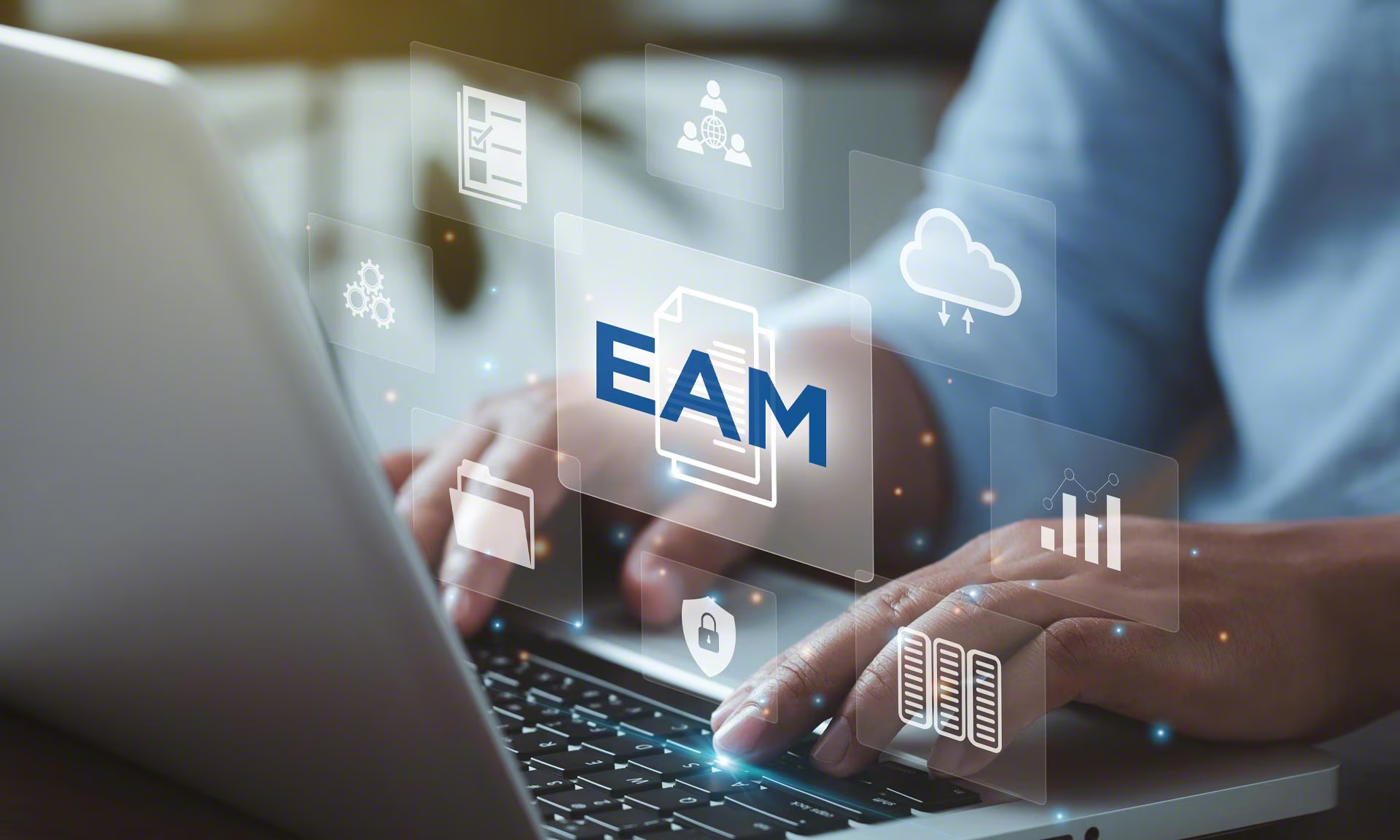
The Interrelation of EAM, ITAM, and ITSM
Although EAM, ITAM, and ITSM are distinct, they are intricately linked. EAM offers a broader view of asset management across the organization, ITAM focuses specifically on IT assets, and ITSM ensures these assets are used effectively to deliver services.
- Asset Utilization: EAM ensures all assets, including IT assets, are optimally utilized. This synergy helps ITAM prevent IT assets from becoming overburdened due to underutilized physical resources.
- Service Delivery: ITSM depends on accurate data from EAM and ITAM to ensure efficient service delivery. Poorly managed IT assets can negatively impact service quality.
- Data-Driven Decisions: Insights from EAM and ITAM feed into ITSM, enabling organizations to make informed decisions about service improvements and resource allocation.
Benefits of Integrating EAM, ITAM, and ITSM
- Enhanced Visibility: Integration provides a comprehensive view of asset performance, supporting better strategic decisions.
- Improved Efficiency: Streamlining processes and eliminating redundancies increases operational efficiency across departments.
- Cost Savings: A unified approach optimizes resource utilization and reduces downtime, leading to significant cost savings.
- Better Compliance: Integrated management ensures adherence to regulatory standards and industry best practices.
- Increased Customer Satisfaction: A well-managed IT infrastructure improves service delivery, boosting customer satisfaction.
Conclusion
In an age where efficient asset and service management is paramount, understanding the roles of Enterprise Asset Management (EAM), IT Asset Management (ITAM), and IT Service Management (ITSM) is crucial for organizations. By leveraging these frameworks, businesses can optimize asset utilization, enhance service delivery, and drive success.
As technology continues to evolve, organizations that adopt an integrated approach to EAM, ITAM, and ITSM will be better positioned to adapt, innovate, and thrive in a competitive landscape. Embracing these strategies not only streamlines operations but also creates a foundation for sustainable growth and operational excellence.
- Published in Asset Management, helpdesk outsourcing, ITM, Technology
What is IT Asset Management?
IT Asset Management (ITAM) plays a pivotal role in optimizing IT investments and ensuring the efficient use of technology within an organization. Whether you are part of a growing business or a large enterprise, IT Asset Management software helps track and manage hardware, software, and other technological resources, improving efficiency and reducing costs.
Understanding IT Asset Management (ITAM)
IT Asset Management (ITAM) is the practice of managing and optimizing the life cycle of IT assets within an organization. These assets can range from physical hardware (such as computers, servers, and networking equipment) to software licenses, virtual systems, and cloud resources.
The primary goal of ITAM is to maximize the value of IT investments while minimizing risks, reducing costs, and improving productivity. It involves tracking the procurement, deployment, usage, maintenance, and retirement of all IT assets.
Why is IT Asset Management Important?
For businesses to stay competitive, they must ensure their IT infrastructure operates efficiently. Here’s why ITAM is crucial:
- Cost Reduction: By tracking IT assets, businesses can avoid unnecessary purchases and make the most of existing resources.
- Improved Compliance: ITAM ensures that organizations comply with software license agreements and regulatory requirements, reducing the risk of costly penalties.
- Asset Life cycle Optimization: ITAM monitors the life-cycle of IT assets—from procurement to retirement—ensuring optimal performance and timely replacements.
- Risk Management: Maintaining an up-to-date inventory of IT assets helps mitigate risks such as data breaches, system failures, and security vulnerabilities.
For Demo Request Form please visit IT Asset Management Software
Key Components of IT Asset Management
Effective ITAM requires the integration of multiple components to provide a holistic view of the organization’s IT infrastructure:
- Inventory Management: Tracks all IT assets, including hardware, software, and cloud resources, ensuring that nothing is overlooked.
- Software License Management: Ensures compliance with software licenses, avoiding legal issues and over-purchasing.
- Asset Life-cycle Management: Oversees the procurement, deployment, maintenance, and retirement of IT assets to maximize their value and efficiency.
- ITSM Integration: ITAM integrates with IT Service Management (ITSM) processes—such as incident, change, and configuration management—to provide a seamless approach to managing IT infrastructure.
The Role of IT Asset Management Software
Organizations use IT Asset Management software to streamline and automate asset management processes. This specialized tool offers a comprehensive view of the IT infrastructure, making it easier to track, manage, and optimize assets.
Benefits of IT Asset Management Software
- Centralized Asset Inventory: ITAM software provides a single platform to track all IT assets, offering visibility into hardware and software usage.
- Automated Tracking and Reporting: Automates the tracking of IT assets, ensuring no equipment or software goes unaccounted for. It also generates reports to support informed decision-making.
- Compliance Management: Helps ensure compliance with software license agreements, reducing the risk of fines and legal issues.
- Cost Savings: Offers clear insights into IT asset usage, helping organizations avoid unnecessary expenditures on new equipment or licenses.
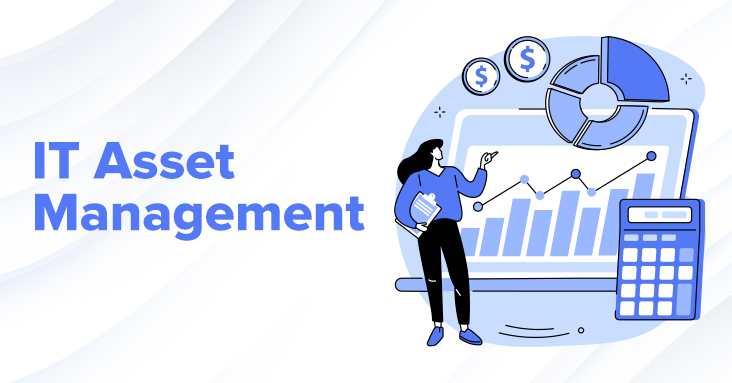
ITAM vs. ITSM: What’s the Difference?
Although ITAM and ITSM are interconnected, they serve distinct purposes:
- IT Asset Management (ITAM): Focuses on managing the life-cycle of IT assets, offering visibility into the organization’s inventory to ensure efficient use of resources.
- IT Service Management (ITSM): Concentrates on delivering IT services, including processes such as incident, change, and problem management, to align IT services with business needs.
While ITAM manages the hardware, software, and resources, ITSM manages the services delivered to end-users. Integrating ITAM and ITSM fosters a cohesive IT strategy that enhances service quality and optimizes resources.
Choosing the Right ITAM Solution
Selecting the right IT Asset Management solution is critical to managing IT assets effectively. Consider the following factors when evaluating ITAM software:
- Scalability: The software should scale with your business as the number of IT assets grows.
- Ease of Integration: Choose a solution that integrates smoothly with your existing ITSM tools, such as Service-now or Jira.
- Cloud Compatibility: Ensure the software can track and manage cloud assets as effectively as physical ones.
- Customization: Opt for a solution that allows customization to meet your business’s specific requirements.
- Real-time Analytics: Look for software that offers real-time data on asset status, usage, and performance to support quick decision-making.
Key Features of ITAM Software
When evaluating ITAM software, consider the following features:
- Discovery Tools: Automated tools that scan the network to identify connected devices, including computers, servers, printers, and IoT devices.
- Asset Life-cycle Management: Tracks the entire life cycle of IT assets, from procurement to decommissioning.
- Compliance Tracking: Manages software licenses to ensure compliance with agreements.
- ITSM Integration: Unifies asset management with service management through seamless integration with ITSM platforms.
- Reporting and Analytics: Provides insights into asset utilization, costs, and compliance status through comprehensive reporting tools.
The Future of IT Asset Management
The future of ITAM is closely tied to the ongoing digital transformation. As businesses adopt cloud solutions, IoT devices, and AI-driven technologies, managing IT assets will become more complex.
Emerging Trends in ITAM
- AI and Automation: AI-powered tools will automate tasks like asset discovery, compliance tracking, and life cycle management.
- IoT Asset Management: With the rise of IoT devices, ITAM solutions will need to manage a broader array of assets.
- Cloud Asset Management: As cloud adoption increases, ITAM solutions will evolve to manage cloud-based assets more efficiently.
Conclusion
IT Asset Management (ITAM) is essential for businesses aiming to optimize IT investments and reduce costs. By leveraging IT Asset Management software, organizations can streamline asset tracking, ensure compliance, and enhance operational efficiency. As technology evolves, ITAM will become even more critical in helping businesses remain competitive in the digital landscape.
Whether you are a small business or a large enterprise, investing in a robust ITAM solution will yield long-term benefits through cost savings, risk reduction, and improved productivity.
- Published in Asset audit, Asset Management, helpdesk outsourcing, ITM, Mobile, Technology
The role of a Helpdesk and IT ticketing system
The Role of a Helpdesk Ticketing System
A helpdesk ticketing system is a crucial tool that enhances how organizations manage, resolve, and track technical issues, requests, and incidents. In today’s technology-driven business environment, an effective ticketing system for IT support is essential for maintaining seamless operations, ensuring rapid response times, and monitoring recurring problems. Whether in a small business or a large corporation, the necessity for organized communication between users and the IT department is vital. This article examines the role of an IT ticketing system, highlighting its functions, significance, and its contribution to overall operational efficiency.
What is an IT Ticketing System?
An IT ticketing system is a software tool utilized by IT teams to handle and resolve IT tickets, which can include queries, issues, service requests, or problems related to hardware, software, or other technical concerns. Each ticket represents a task or issue, enabling users to submit, monitor, and track these IT tickets from creation to resolution. This process provides a structured approach to managing issues, ensuring that nothing is lost in communication or overwhelmed by numerous requests.
Typically, the ticketing system software incorporates various features such as automation, categorization, prioritization, and ticket routing. This ensures that the appropriate personnel with the required skills address the relevant tasks efficiently.
Key Features of an IT Ticketing System
- Ticket Creation: The process begins when a user submits a support request, which is transformed into an “IT ticket.” Each ticket includes pertinent details about the issue or request, such as the type of problem, severity, and any other relevant information.
- Ticket Assignment and Categorization: Once created, the ticket is assigned to the appropriate IT personnel based on the issue’s type and priority. The system may automatically route the ticket to specific departments or team members specializing in the relevant area.
- Priority Setting: Not all IT tickets are created equal. Some issues, such as network outages, require immediate attention, while others, like requests for software installation, may have lower urgency. An IT ticketing system enables prioritization of tickets based on urgency, importance, and business impact.
- Tracking and Monitoring: Users and IT staff can track the progress of an IT ticket in real time. This transparency is essential for both parties—users can see that their requests are being addressed, while IT staff can manage and organize their workload effectively.
- Knowledge Base and Documentation: A robust IT ticket tool may feature a knowledge base that stores solutions to recurring problems. IT staff can reference this repository, which accelerates resolution times and provides self-help options for users.
- Automation: Many IT ticketing systems come equipped with automation features to streamline repetitive tasks, such as ticket assignment or escalation. Automated workflows minimize human error, ensuring that IT tickets are resolved within the desired timeframe.
- Reporting and Analytics: An IT ticketing system gathers valuable data on support activities. Reporting tools provide insights into ticket resolution times, common issues, team performance, and customer satisfaction, fostering continuous improvement in IT service delivery.

The Role and Importance of an IT Ticketing System
The primary function of a helpdesk ticketing system is to facilitate efficient issue resolution and ensure accountability in IT services. Here are the main ways an IT ticketing system contributes to organizational success:
Centralized Communication Hub
An IT ticketing system serves as a centralized platform for communication between IT teams and end-users. Without such a system, requests for assistance might be scattered across emails, phone calls, or instant messages, leading to confusion, miscommunication, or tasks falling through the cracks. A ticketing system consolidates all requests in one location, making it easier for IT teams to manage their workload and ensuring users know exactly where to seek help.
Streamlined Workflow and Organization
One of the most significant advantages of an IT ticketing system is how it streamlines workflow. By assigning tickets based on category, skill set, and priority, the system ensures that IT personnel handle issues that match their expertise, leading to faster resolution times. It helps IT managers balance workloads, preventing some staff members from being overwhelmed while others remain underutilized.
Accountability and Transparency
When tickets are logged and tracked within a system, accountability is built into the process. Each ticket has a clear trail from creation to resolution, allowing users and IT managers to monitor progress. Additionally, if any issues arise, the history of actions taken on the ticket can be reviewed, enabling the identification of steps to enhance the process. This transparency also ensures users feel valued and informed, as they can track the status of their requests and receive updates, minimizing frustration and reducing unnecessary follow-ups.
Better Resource Management
By prioritizing and categorizing tickets, an IT ticketing system assists in allocating resources where they are needed most. For example, critical system outages will be addressed before lower-priority tasks, such as password resets or minor software glitches. This ensures that IT departments function efficiently and allocate resources in alignment with business needs.
Improved Service Quality
With a structured IT ticketing system in place, IT teams can provide higher-quality service. Automating repetitive tasks, maintaining accurate records, and routing tickets to the right personnel can significantly reduce resolution times. Furthermore, the system’s ability to monitor performance and generate reports helps IT teams continuously enhance their services by identifying areas needing additional attention.
Data-Driven Decision Making
The data collected through an IT ticketing system can be invaluable for decision-making. Managers can analyze trends in issues, identify recurring problems, and even anticipate potential system vulnerabilities. This data aids in planning future IT strategies, optimizing resource allocation, and improving overall service delivery.
Enhances User Satisfaction
A reliable IT ticketing system keeps users satisfied by providing a quick, efficient, and transparent way to resolve their issues. Users feel more confident when they know their requests are being handled systematically and can track the status of their IT tickets at any time.
Conclusion
In today’s fast-paced business environment, where IT systems are the backbone of most operations, the importance of an IT ticketing system cannot be overstated. It offers an organized, efficient, and accountable method for managing IT support requests, ensuring timely issue resolution, and fostering better communication between IT teams and end-users. By streamlining workflows, improving resource management, and providing transparency, a ticketing system ultimately enhances operational efficiency and user satisfaction, making it an indispensable tool for modern organizations.
- Published in Technology
How Best IT Asset Management software tools can improve efficiency.
Using the best IT asset management software tools offers solutions for making your business more efficient. There are many assets in the organization, some are scattered across different countries or places. The concern is how to manage and track these assets effectively and ensure proper maintenance of assets timely.
Here the best IT asset management software plays a significant role to manage assets, tracking, reports, and maintaining them. Asset management software allows managing the assets, hardware, software, and other accessories that exist in the organization’s network efficiently. It allows businesses to monitor or track their assets and effectively manage them for optimum utilization while reducing IT and software costs.
We can’t deny that modern businesses are dependent on assets or digital assets in order to gather good revenue for business and survive with marketing trends. It is essential to monitor whether the assets of the organization and their implementation is profitable for your business or not. The aim of the Best IT asset management software tool is to get value from their assets, maintain, initiate business growth, and reach the business goals within the timeline.
If you want your organization’s operations to work efficiently, and smooth workflow operations This software can help you to make informed business decisions and contribute to business growth. Asset management provides organizations the scope to improve business efficacy and management of IT infrastructure efficiently. Moreover, use the effective software asset management tool to optimize the business environment and systematically use your assets.

Reasons that make asset management software to upscale business operations & improve efficiency
There are many reasons for organizations to implement Asset management software tools with business operations. Many organizations lack asset management software tools can lead to compliance issues, wasted resources, delays, incurring heavy costs, and more. To lessen such risks, organizations should know how their assets are being utilized, their configuration, asset roles, etc. To achieve these goals, by implementing the best IT asset management software for the organization.
Proper regulation of organizations’ assets and the implementation of asset management systems the right way can boost efficiency and profit at a tremendous rate. In this competitive arena, every entrepreneur is looking up for the tools and assistance to sustain in the market.
Assets play a keen role to get profits from projects and commitments only if they are utilized in an efficient manner. All organizations invest in assets to enhance productivity and profit margins. Asset maintenance and depreciation often become difficult, Like any other department, assets also require preservation ad proper planning.
The best IT Asset management software tools are required by the organization to maintain & improve their efficiency
Greenitco offers a great option for businesses that are looking for the Best IT asset management software tools solution. This software solution is compatible with businesses and offers top-notch tools and features to upscale businesses.
Benefits of using the best Asset Management software solutions for business
The main issue in the organization like to monitor and manage existing assets manually. This may lead to errors and compliance issues. So to avoid these errors. Greenitco technologies offer the assistance of asset management software. It can help you to streamline the workflow and offer a platform where you can manage and monitor assets efficiently. Managing assets can give you good returns on their profit value for your business.
Check some ways the Asset Management system can increase business efficacy
Improvised assets or equipment effectiveness
Assets and equipment of the organization are important to be in good condition to give effective output. The profits of the organization depend on it too. While maintaining the updated status of the equipment manually, along with maintaining records is a tedious task. But with the help of an Asset management software system, it becomes easy to maintain & access the effectiveness of every asset or equipment.
The best IT Asset management software system has indicators to evaluate the functioning of machines and coordinate assets across the globe easily. It checks the completability of the machines with the required output and enables o offer of effective solutions for it. Implementation of an Asset management system for the business can manage the assets and maximize the income range of the enterprise.
Improvised operational efficacy
When you have assets organized once in the centralized database. It would be easy to manage operations easily. That includes their capabilities, how they can be operated in the most effective way, and a detailed return on investment (ROI).
Increased Asset Visibility
Every organization has n number of assets that have their own purpose. Assets like physical assets, It assets such as computers servers, software assets, etc. As the business grows so as the assets county increases.
Asset management tools offer features to ensure that all assets are discoverable & visible to the business owners. The information is stored in the centralized database system that is accessible as per the permissions granted by business owners. Easy to access the assets of the organization and manage them easily
Asset Tracking
This feature lets you know exact details on a real-time basis about assets and management. It assists in scheduling the maintains of assets and plays an important role to increase the lifespan and durability of assists. When let you manage large assets by assigning asset number or ID, so it can work well.
Asset Life cycle management
There are four stages of the asset management lifecycle :
- Planning: Identifying the need to purchase an asset that can be useful to generate profit.
- Acquisition: Purchasing and assigning an asset according to the business requirement.
- Operation and Maintenance: Ensuring the asset’s life cycle is working uninterruptedly.
- Disposal: Calculating an asset’s depreciation value and managing depreciated assets efficiently.
Having a detailed understanding of Asset life cycle management ensures that assets are purchased, operated, maintained, disposed and tracked efficiently. It ensures the maintenance status is updated efficiently. Along with having insight into data
Accelerate Maintenance Planning
IT Asset management software assists in building an efficient maintenance schedule for assets. It ensures assets are in working order and are being tracked and managed by the system.
Maintenance strategies can differ as per business requirements. Create a maintenance plan for the assets required as per business requirements.
Maintenance for assets helps to :
- Reduce downtime of assets.
- Minimize emergency repair and breakdown costs
- Increase asset uptime
- Asset depreciation management
- Prolong the life expectancy of assets
Efficiency to assess potential risk with effective, measures
It enables the establishment of the process to improve the business operations and productivity of the organization. If the asset management process is implemented effectively, you can monitor and manage assets with a systematic approach. Moreover, organizations can increase production and returns on investment.
Cloud-based solution
Cloud hosting is an important feature of asset management software to have for your organizations. It gives information about the assets anytime and anywhere. Offering the best IT asset management software that makes it easy to access through the application or from a browser or by any device remotely. Moreover, users can receive software updates when scheduled.
Conclusion
Deploying an efficient technology for your business is profitable for your business. Focus on work and let the software manage the workflow. Asset management software is an important aspect of the business. Opting for an Asset Management System can be your first step in taking your business venture to scale. Moreover, Organization’s assets are the most important factors for the overall growth of your business. Therefore, you must look for asset management software very wisely
- Published in Asset audit, Asset Management, helpdesk outsourcing, Mobile, Networking, Technology, technology support
How can Managed Services assist your business to grow?
The year has bought many new challenges and possibilities for businesses around the world to take your business to next level. Remote work and IT professional Assistance are important for every business. This article get insight to help you to understand the importance of managed services for your business.
Managed Service Providers offer different ranges of services. First, look over your agreement carefully to make sure you have an agreed-upon understanding of what is expected of your managed services expert.
If you are hunting for opportunities to grow your business, it is time to consider Managed Service Provider (MSP) work to improvise organization efficiency, reduce cost and offer the best assistance & resources. The growth of the organization is a long-time process; MSPs can streamline the workflow and manage the business operations efficiently.
Why do Businesses Need Managed Services?
Issues in business occur at times while managing tasks like
Businesses face many issues like :
- Maintaining the performance of IT infrastructure systems.
- Manage the risk of excessive cost – managing a business budget.
- To adopt new technologies to stay ahead in the digital ecosystem.
Issues like redundant system entries, updating and patching of software, and more take time for the IT team in an organization. They have less time to innovate or focus on the clients to help the business grow. To work with changing trends and overcome IT-related hassles, IT professionals need additional support. Change plays a vital role to deal with the new technology and stay ahead in this digital ecosystem. With the advent of digital transformation with advanced technology. IT management services should have more flexible and advanced features for more business optimization and regular maintenance.
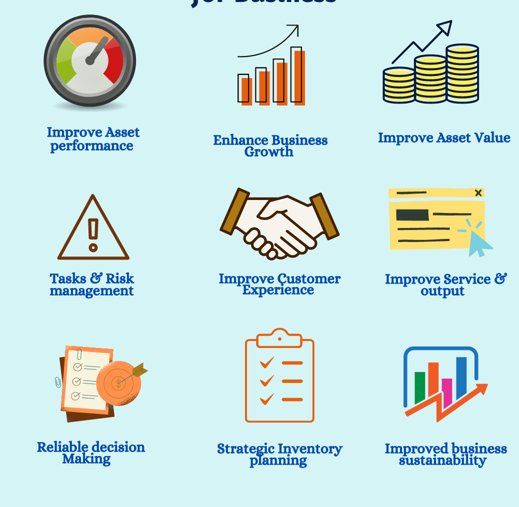
A business, small or large, needs technology and automation to grow, streamline processes, and compete in the market. In the coming years, technological advancements like cloud computing, big data, and mobility services will drive the growth ahead for managed services.
Businesses go for expert services to improve profit margins and meet the needs of this dynamic business environment. MSPs help organizations chart their future growth strategy with expert advisory services and keeping the factors in mind, like market demands, customer requirements, available resources, and more. MSP can initiate companies to grow and flourish at a pace. Get started.
Types of Managed Services
Managed services are structured in different areas:
- Delivery Platforms: includes SaaS, cloud, or local host system
- Technology Maintenance: includes maintenance of technology and delivering content.
- Security Operations: Managing the outcome-based delivery.
It depends on the Managed Service Provider ( MSP ) in which they excel and are ready to offer services related to it.
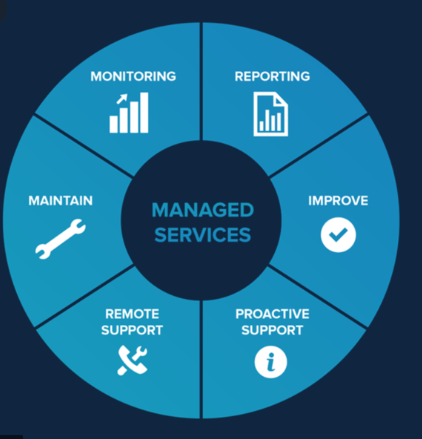
We have types of managed services available for your business:
- Managed SaaS (Software as a service):
- These managed service providers may offer a software platform. It can be subscription-based or centrally managed depending on services. Example managing Human Resource Department, Accounts department, or any. Only when SLA is in effect.
The role of MSP is to assist you in installation, customization, and troubleshooting, to ensure that your service remains at an optimal level. Side by side gives your employees focus on business needs
We have types of services available for your business:
Cloud Infrastructure Services:
Managed cloud service providers manage cloud services, their expertise offer cloud solutions for remote management and monitoring, etc. Organizations having managed cloud service provider can improvise their efficiency at work and create a sorted workflow.
Managed Security Services:
It offers facilities of remote security infrastructure. It includes a remote system, virtual desktop, and other services.
Network & Infrastructure services:
This type of MSP works for the network functions. It includes cloud network, infrastructure management, and monitoring them remotely. These types of services mostly have backup & storage management options.
Technical Support Services:
These services include providing complete IT support services. This service offers the staff members platform to contact through a remote support center at any time for guidance to fix the issues that they come across.
Communication Services:
MSP includes a communications service, for communication internally with customers. Managed communications typically include video calling, instant messaging technology, and email services.
Role of Managed Services for business development
The role the managed services play to meet the requirement of the organization and which need will be required ahead in the future. Utilizing the IT resources here Managed services are well to assist with effective output & better productivity.
Business is small or large all it needs is technology and automation to grow, streamline processes, and compete in the digital ecosystem. In advancements of technology like cloud computing, big data, and mobility services will drive the growth ahead for managed services. The businesses prefer these services to improve their profit margins and meet the needs of this dynamic needs business.
MSPs help organizations improve their future growth strategy with expert advisory services.
Keeping the factors in mind, like market demands, customer requirements, available resources, and more. MSPs are a good option for initiatives that wish the grow.
Final Thoughts
I hope this blog helped you recognize the importance of managed services for your business. Keeping the factors in mind, like market demands, customer requirements, available resources, and more. Thus, MSPs are necessary for initiatives that wish the grow. Now you can figure out how managed services can assist your business to grow and succeed. Let me know your feedback in the comments section.
- Published in Asset Management, Mobile, Networking, Technology





